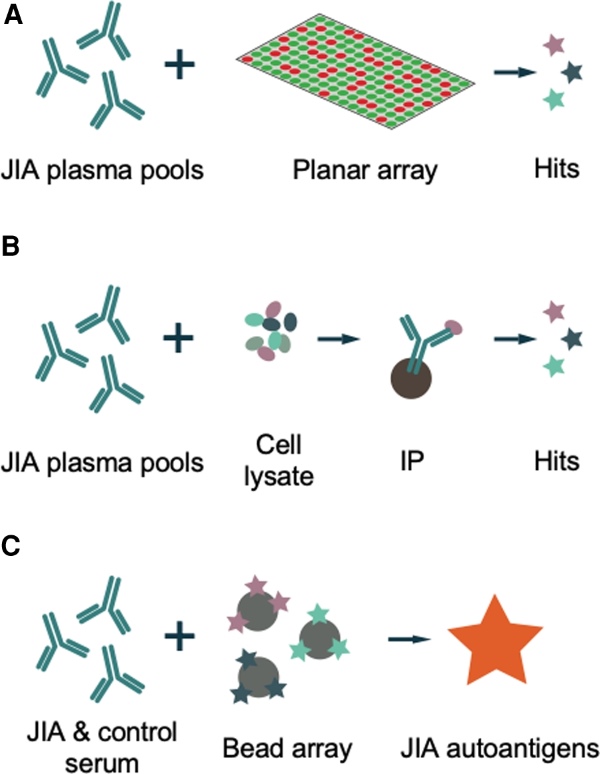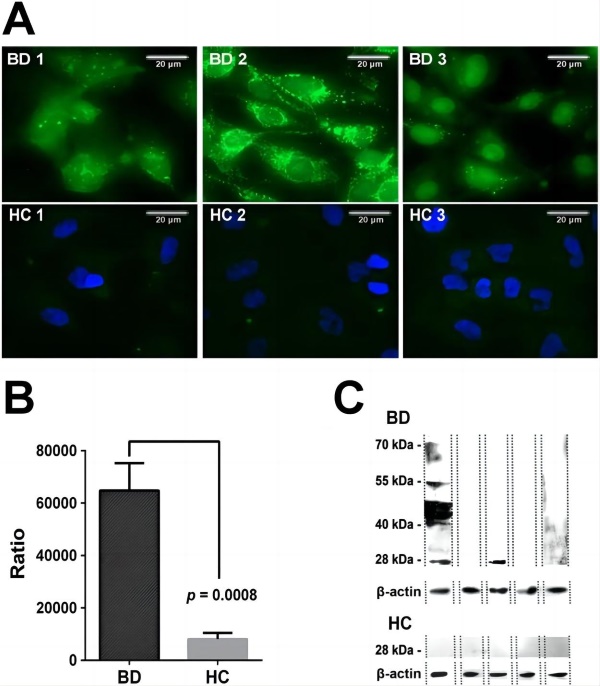Antigen Microarray Detection Service for Autoantigens General Survey
At Creative Biolabs, we offer comprehensive NAA detection and profiling services, encompassing cutting-edge techniques such as the NAA platforms and autoantigen microarray, specifically designed for an in-depth general survey of autoantigens. Utilizing state-of-the-art technologies, our NAA platforms ensure accurate and reliable results. The autoantigen microarray, a powerful tool in our service portfolio, enables a thorough examination of autoantigens, facilitating a deeper understanding of immune responses. Trust Creative Biolabs for unrivaled expertise in NAA detection and profiling.
Overview
Overview of Autoantigens in Disease Diagnosis
Detection of circulating autoantibodies holds a great promise to support the diagnosis, prediction, classification, and monitoring of various diseases. Within rheumatoid arthritis (RA), for instance, the presence of a group of autoantibodies to citrullinated protein antigens is associated with more severe structural damage and poorer response to therapy in RA patients. Furthermore, the presence of this group of autoantibodies among healthy individuals is related to an increased risk of developing RA. There are other examples where evidence suggests that in various diseases autoantibodies are produced in patients several years before the onset of clinical symptoms, thus highlighting the early prediction potential of autoantibody analysis. The need for such autoantibody-based biomarkers is escalating in a wide spectrum of diseases, ranging from autoimmune conditions to cancer, especially when taking into consideration their potential for stratification of patient groups in relation to the outcome of therapies and even for the development of antigen-specific therapies. Although the value of autoantibodies as disease biomarkers has been recognized in some conditions, it still remains underutilized in several other ones, where disease-related target self-antigens are not known yet.
 Fig. 1 Schematic analysis of JIA plasma for peptide antigens.1
Fig. 1 Schematic analysis of JIA plasma for peptide antigens.1
Methods
Analysis of Autoantigens
There are several approaches to analyzing autoantibodies and their antigens, such as immunoaffinity methods, proteomics analysis, cell-based assay, protein array, etc. However, it is still challenging to analyze autoantibody profiling and identify their specific antigens. There are tens of thousands of protein species in cells or serum, and their concentration spans widely (ranging from fM to mM). Therefore, detection of small amounts of autoantigens in the biological specimens is difficult, even though sensitivity and dynamic range of analytical methods improved drastically.
 Fig. 2 Autoantigen detection through indirect immunofluorescence assay.2
Fig. 2 Autoantigen detection through indirect immunofluorescence assay.2
Antigen arrays offer a multiplex and high-throughput analysis tool for the investigation of the immune response in the context of several conditions. Arrays of allergen extracts or recombinant allergens can be utilized to characterize the immune response to allergy. Similarly, antigen arrays of pathogens can be utilized to characterize the immune response within various infectious diseases, which might help to develop vaccines or monitor vaccine immunogenicity. By utilizing antigens representing human proteins or peptides, autoimmune reactions against self-antigens can be studied in the context of several diseases, including autoimmune diseases and cancer.
Key Points
Key Points of Antigen Microarray Detection for Autoantigen
- Autoantibodies are increasingly interesting to be incorporated into diagnosis and classification criteria of various diseases including, but not limited to, autoimmune diseases.
- Antigen arrays offer the possibility to screen hundreds of body fluid samples for reactivity against hundreds to thousands of self-antigens at a time, consuming only tiny amounts of antigen and sample material.
- The generation of antigen resources, such as the Human Protein Atlas, and the availability of commercially available antigen array platforms are increasing and will accelerate the accessibility and use of antigen arrays.
- Antigen arrays in the forms of protein, protein fragments, or peptide arrays have been widely utilized for the identification of novel autoimmune targets.
Pros & Cons
Pros and Cons of Antigen Microarray for Autoantigen Detection
| Advantages and Disadvantages of Autoantigen Array Methods | |
|---|---|
| Advantages: | Disadvantages: |
|
|
Services at Creative Biolabs
With advantages in many aspects, antigen microarray detection is an efficient and accurate method for autoantigen general surveys. As an industry-leading CRO company focusing on autoantigens over years, Creative Biolabs provides Antigen Microarray Detection services with 120 verified general human autoantigens. Our experienced experts will offer professional suggestions to help optimize customers' experiment schedules.
If you are interested in antigen microarray detection services or you have any other questions about our services, please feel free to contact us for more information.

Our customer service representatives are available around the clock to assist you.
Resource
References
- Arve-Butler, Sabine, et al. "Identification of novel autoantigens as potential biomarkers in juvenile idiopathic arthritis associated uveitis." Frontiers in Pediatrics 10 (2023): 1091308.
- Chen, Peng, et al. "Electron transfer flavoprotein subunit beta is a candidate endothelial cell autoantigen in behcet’s disease." PLoS One 10.4 (2015): e0124760.
Related Services:
- Brain and Central Nervous System Disorders Detection
- Cancer and Neoplasms Detection
- Common Allergens Detection
- Autoimmunity, Allergy, and Infection Detection
- Coronavirus-Associated Autoimmunity Detection
- SARS-CoV-2 Coronavirus Detection

